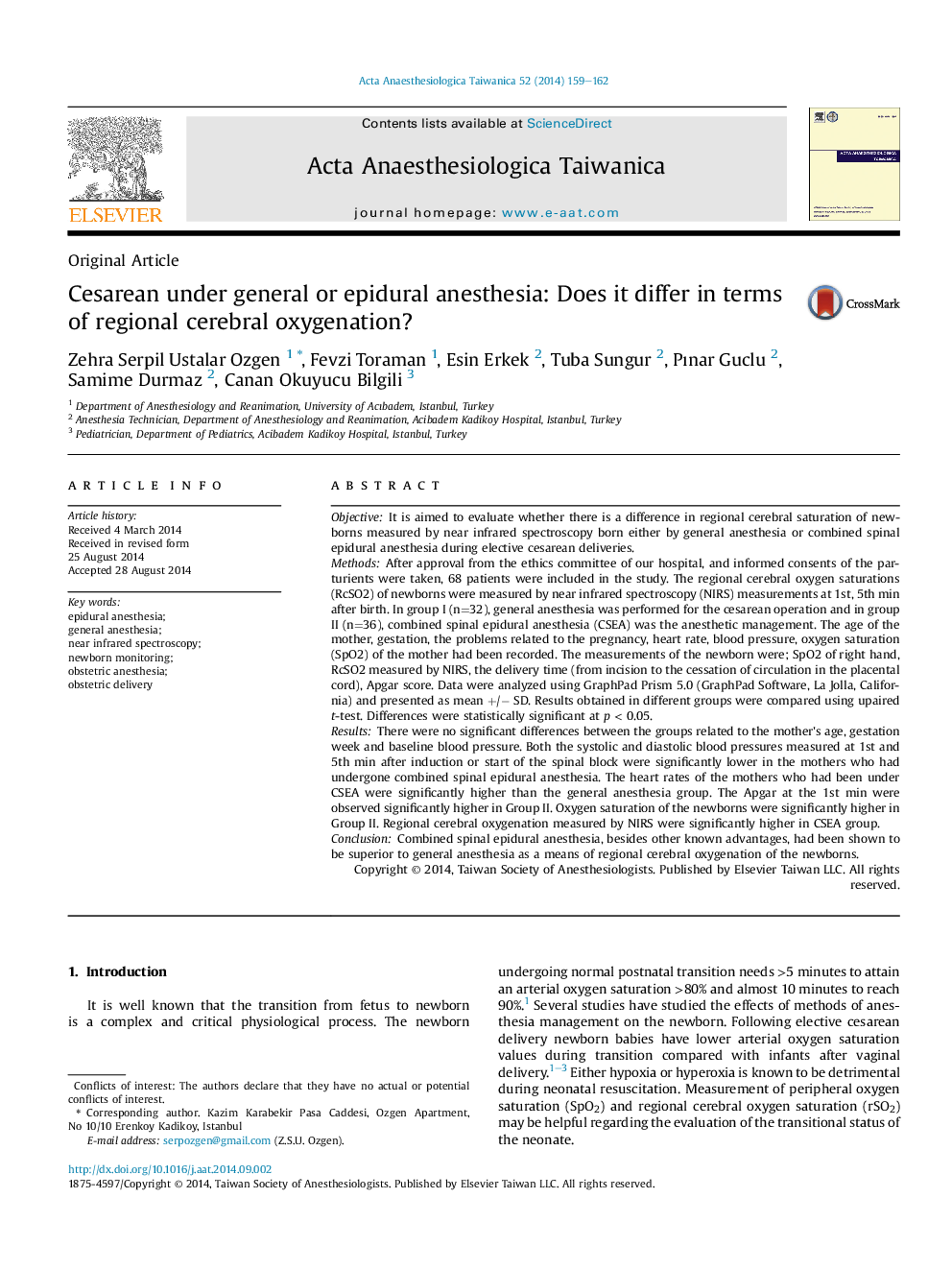| Article ID | Journal | Published Year | Pages | File Type |
|---|---|---|---|---|
| 2741372 | Acta Anaesthesiologica Taiwanica | 2014 | 4 Pages |
ObjectiveIt is aimed to evaluate whether there is a difference in regional cerebral saturation of newborns measured by near infrared spectroscopy born either by general anesthesia or combined spinal epidural anesthesia during elective cesarean deliveries.MethodsAfter approval from the ethics committee of our hospital, and informed consents of the parturients were taken, 68 patients were included in the study. The regional cerebral oxygen saturations (RcSO2) of newborns were measured by near infrared spectroscopy (NIRS) measurements at 1st, 5th min after birth. In group I (n=32), general anesthesia was performed for the cesarean operation and in group II (n=36), combined spinal epidural anesthesia (CSEA) was the anesthetic management. The age of the mother, gestation, the problems related to the pregnancy, heart rate, blood pressure, oxygen saturation (SpO2) of the mother had been recorded. The measurements of the newborn were; SpO2 of right hand, RcSO2 measured by NIRS, the delivery time (from incision to the cessation of circulation in the placental cord), Apgar score. Data were analyzed using GraphPad Prism 5.0 (GraphPad Software, La Jolla, California) and presented as mean +/− SD. Results obtained in different groups were compared using upaired t-test. Differences were statistically significant at p < 0.05.ResultsThere were no significant differences between the groups related to the mother's age, gestation week and baseline blood pressure. Both the systolic and diastolic blood pressures measured at 1st and 5th min after induction or start of the spinal block were significantly lower in the mothers who had undergone combined spinal epidural anesthesia. The heart rates of the mothers who had been under CSEA were significantly higher than the general anesthesia group. The Apgar at the 1st min were observed significantly higher in Group II. Oxygen saturation of the newborns were significantly higher in Group II. Regional cerebral oxygenation measured by NIRS were significantly higher in CSEA group.ConclusionCombined spinal epidural anesthesia, besides other known advantages, had been shown to be superior to general anesthesia as a means of regional cerebral oxygenation of the newborns.
